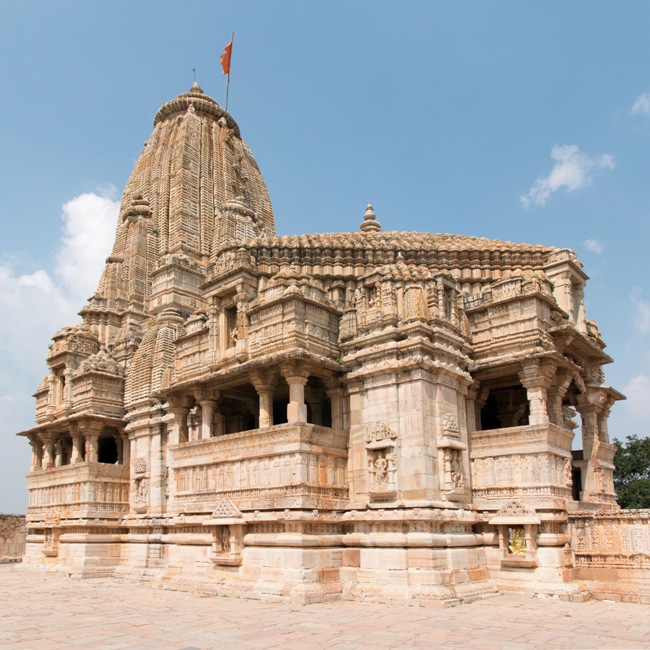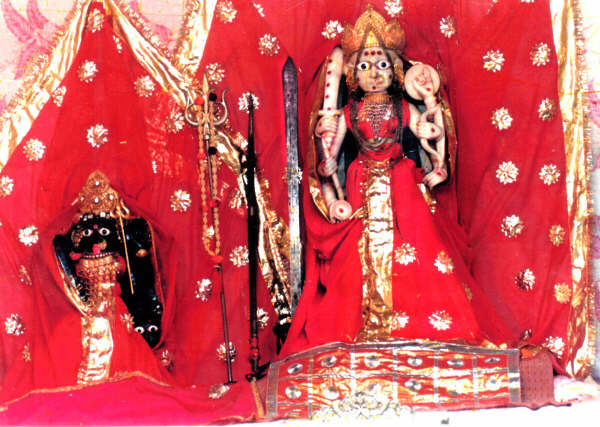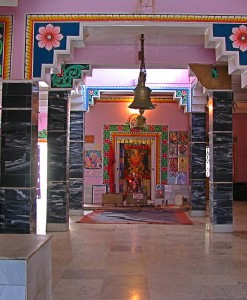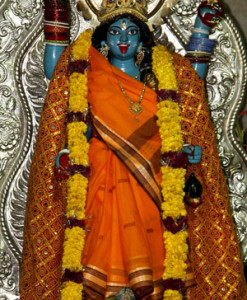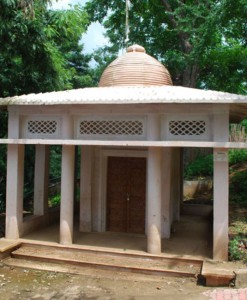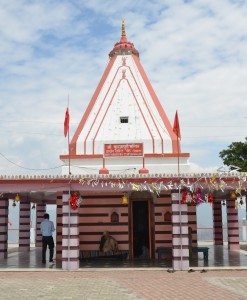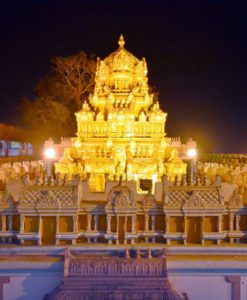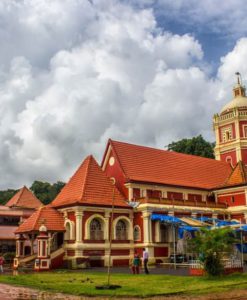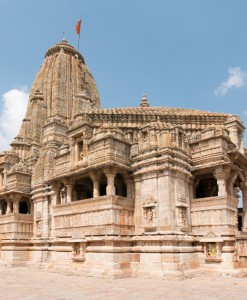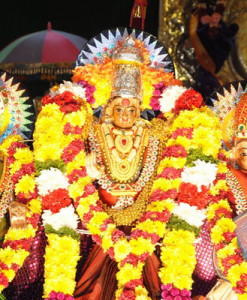No products in the cart.
The District of Rajasthan, Chittorgarh is located on the banks of river Gambhiri and Berach (a Tributary of Banas). Chittorgarh is the epitome of Chattari Rajput (a Hindu Kshatriya (Warrior) caste) pride, romance and spirit. The people of Chittor always chose death before surrendering against anyone.The History of this town is written in blood and sacrifice. It is a Symbol of all that was brave true and noble in the glorious Rajput Tradition.
ABOUT THE TEMPLE:
One of the most fascinating places in Chittorgarh is Kalika Mata temple. This temple belongs to the 14thcentury. It said that the temple which is placed across Padmini Palace was originally a temple of the Sun God, which was built here during the 8th century. This temple was destroyed after the attack by AllaudinKhilji. Dedicated to Goddess Kali (one of the forms of MaaDurga), this temple is an architectural gem that belongs to the Pratihara times. Thus, this temple is not only a popular religious site but is also quite popular amidst tourists and art lovers who visit Chittorgarh.
Kalika temple in Chittorgarh is located on an elevated podium and has intricately sculpted mandap, entry gates, ceiling and pillars. However, a huge part of the temple got destroyed when AllaudinKhilji had attacked the region. The temple is placed between Padmini palace and Victory tower, two of the popular tourist attractions in Chittorgarh. The temple complex also has a huge empty area where ‘RatriJagrans’ are organized. Kalikamata temple is placed on a rock with its entry gate on the east. The temple complex also has a temple dedicated to Lord Shiva. This temple is called JogeshwarMahadev.
Kalika Mata Temple, Chittorgarh Fort, Rajasthan
BappaRawal built the Kallika Mata temple sometime during the 8th century for Surya, the Sun god. AlauddinKhilji destroyed it in the first sack of Chittor, but Rana Hammir rebuilt it as a Kali temple in 14th century. The temple consists of five chambers, all devoid of their original roofs. The walls of this temple are plain but the cornices are decorated with lotus symbols. The inner sanctums walls depict the Sun god Surya in nichs surrounded by consorts and angels.
The moon god Chandra is also shown in sculptures in the walls which rise up into a flat ceiling supported by quadrangular pillars, also intricately carved and bracketed at the top. The doorframe of the inner sanctum has four ornamental bands with Surya forming the central theme of its carvings.The entire frame is flanked by an elaborate panel in which are carved figures of deities around a main figure of the sun god. The temple still retains the flavor of the Gupta style of architecture, and an inscription within the edifice informs us that it was built by king Manabhanga.
Chittorgarh Fort is considered to be the largest fort of India in terms of area. It is stated that the fort was constructed by theMauryans during the 7th century AD and hence derives its name after the Mauryan ruler, Chitrangada Mori, as inscribed on coins of the period. Historical records show Chittorgarh fort as the capital of Mewar for 834 years.It was established in 734 AD by BappaRawal, founder ruler in the hierarchy of the Sisodia rulers of Mewar. It is also said that the fort was gifted to BappaRawal as part of Solanki princess’s dowry in the 8th century.
The fort was looted and destroyed at the hands of Emperor Akbar in 1568 AD and subsequently never resettled but only refurbished in 1905 AD. Three important battles were fought for control of the fort; in 1303, Ala-ud-din Khilji besieged the fort; in 1535, Sultan of Gujarat Bahadur Shah besieged the fort; and in 1567, Mughal Emperor Akbar attacked the fort. Each time the men fought bravely rushing out of the fort walls charging the enemy but lost every time.
Thus, the fort represents the quintessence of tribute to the nationalism, courage, medieval chivalry and sacrifice exhibited by the Mewar rulers of Sisodia and their kinsmen and women and children, between the 7th and 16th centuries. The rulers, their soldiers, the women folk of royalty and the commoners considered death as a better option than dishonor in the face of surrender to the foreign invading armies.
In the bright half of the month of Ashwin and Chaitra, the first nine days are held sacred for religious practices and ritualistic performances. The devotees, especially in this holy and auspicious period, offer special prayers. For all the nine days a constant stream of people can be seen and the sea of humanity assembled here evokes great and sublime thoughts of veneration of the mother goddess.
Temple Timings: 6:00AM to 12:00 Noon and 4:00PM to 8:00PM
Chittorgarh, located in the southern part of the state of Rajasthan, 233 km (144.8 mi) from Ajmer, midway between Delhi and Mumbai on the National Highway 8 (India) in the road network of Golden Quadrilateral. Chittorgarh is situated where National Highways No. 76 & 79 intersect.
In 2013, at the 37th session of the World Heritage Committee held in Phnom Penh, Cambodia, Chittorgarh Fort, along with 5 other forts of Rajasthan, was declared a UNESCO World Heritage Site under the group Hill Forts of Rajasthan.

